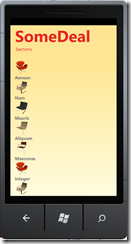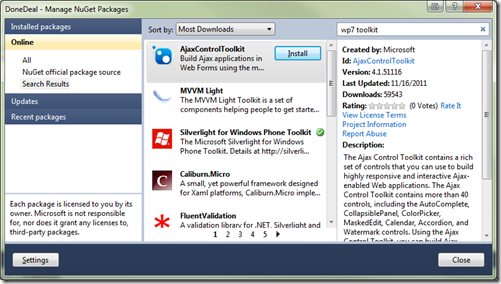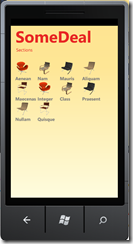So I’ve splashed out the 600euro and got me a SIM free Samsung Galaxy S4 Android phone.
Why?
Well I find myself doing more and more JAVA these days (as if I wasn’t busy enough keeping up to speed on .NET and iOS too) and I’ll admit it’s starting to win a place in my heart, not the language as such as it’s IMO inferior to C#, but the framework has lots little gems, there are some pretty nice external frameworks e.g. Drools, JBPM etc, and the application servers are interesting (I'm focusing mainly on JBoss AS7 these days); what I’m trying to say is that I’m starting to feel that Android may be a home away from home.
Flirtations
Well I’ve previously two timed my iPhone with a Windows Phone 7, this lasted for about 10 months before I moved back to iPhone, I guess one of the biggest reasons for doing this was I’d invested in a few iOS apps like the very expensive TomTom Worldwide and I kept finding a need for it (I travel with work and don’t always have roaming data). Also the lack of apps was disappointing, even though I contributed to the ecosystem with a WP7 app for Grass Management. I know the app situation is improving especially with Microsoft buying them up but I see too many complaints on social feeds to make me think they are a little shaky (is it the fault of the developers? … maybe!). When I moved back from WP7 to iPhone I complained for a few days over little nuisances, but I stayed there. Until now….
Android a week on
I’ll admit I was a little apprehensive at first thinking I’d like only the big screen and the ability to write and deploy some droid apps on a real device (i don’t include the Samsung Galaxy Y that’s lying about the office as a real device :-) )
The good
But I’ve been very surprised, the Android apps appear to be better, the experience appears to be better, notifications are better. Why do i think this is? well maybe because the API allows the developers to do more, iOS does really lock things down which has it merits (we’ve all heard about the apps that silently call premium numbers).
- The screen is large and beautiful
- Camera is fantastic
- Have all the apps I had on iPhone (not yet paid for TomTom again but will)
The bad
- I don’t have the ability to have widgets on the lock screen when I have a PIN active.
- The screen is too large! Contradiction I know, but I’ve hands like shovels and I need two of them for this device, apple has a great argument but it won’t win out.
Am I going back
Well never say never, but apple needs to up it’s game with a bigger screen, I always thought it was fine until I look back on my iPhone now and think it’s tiny
So my wife left me for a hen weekend and I needed something to do with my time.
Friday night I dedicated to my real work to clear my conscience and then I went to play.
Windows 8
I spent a few frustrating hours on Saturday working on a Win8 application to compliment a certain website, frustrating… in so far as the Xaml designer in VS11/Blend on Windows 8 hangs like a good one. Actually at serveral points in time I considered changing my app to html5/js, because, for at least for the search section of the app I could see no blockers. However I want to add some pretty nifty features going forward and I don’t feel like implementing them in javascript.
I guess I may the possibility of writing them in C++/C# as a library and using this from the UX application if it continues to slow me down. I’ll have to consider cutting my losses soon if it keeps hanging the development environment that’s for sure (the joys of working with not only a Beta application, but a beta OS!  )
)
WP7
So for a bit of fresh air I started writing the WP7 app, at least this is more familiar ground to me having written quite a few of them already, and I just took my resource dictionaries from the WinRT app. To start with I just used some sample data in expression blend, dropped on a list box and bound my sample data to it.

But the layout wasn’t really what I wanted. I’m hoping that that API for the real data may provide me with a list of categories, one wouldn’t really want to have to release a new app every time a new section was added would they.
So my approach would be just to bind the data to a list for now (it may well turn out to be an ordered list in the API). The problem as you can see above what that I was getting a single row for each item.. not what I wanted.
Would you believe this was the first time I’ve not wanted this default layout in a WP7 app, so I decided to use the WrapPanel container that I’ve previously used in a WPF app… but alas it doesn’t exist out of the box!
Silverlight WP7 Toolkit to the rescue.
A quick Google indicated that the WP7 toolkit had the WrapPanel I was looking for, I fired up the Nuget package manager and added it to my project.

Items Panel
One more change was needed in my xaml, I needed to specify where to use this wrap panel.
This I specified in the ItemsPanelTemplate of the listbox in question.

The final result!

Hopefully this helps someone else out.